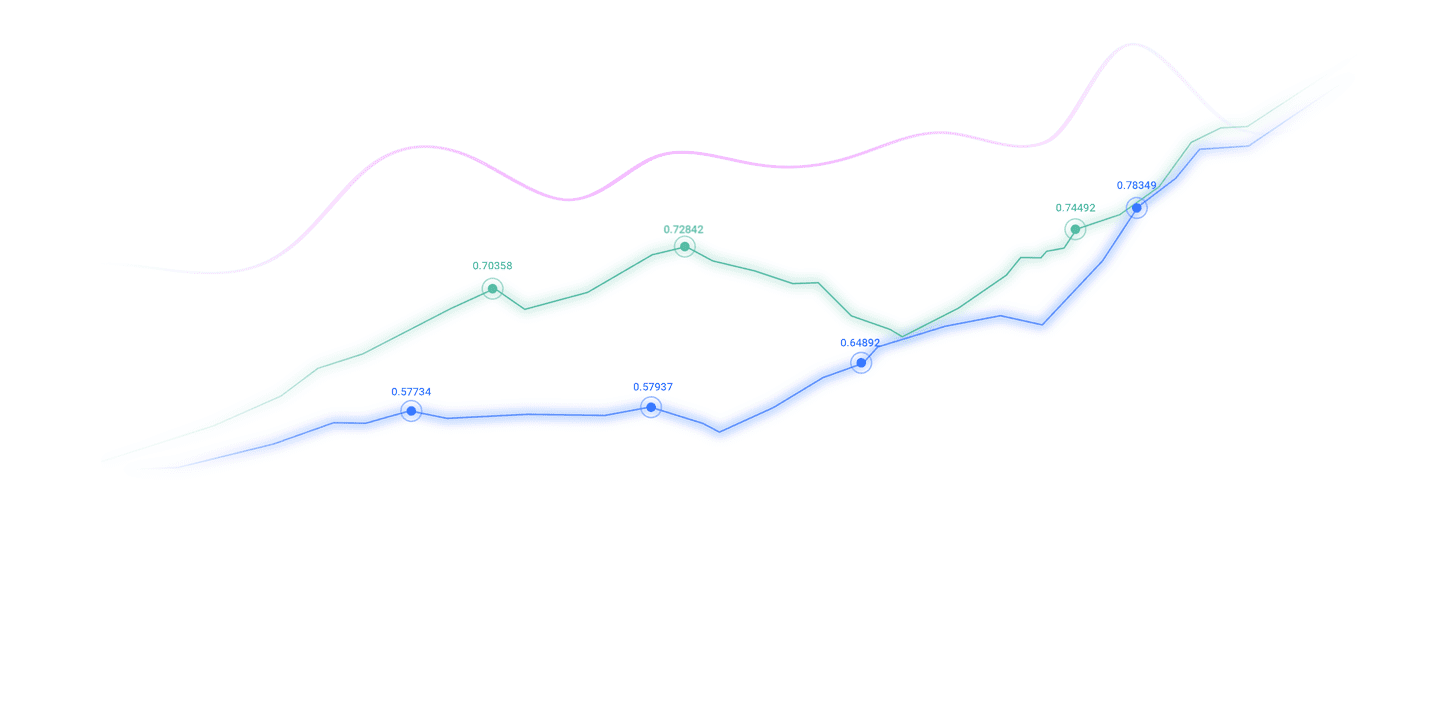Trusted by over 15 Million Traders
The Most Awarded Broker
for a Reason
CATEGORIES
News
- 8.1 Analysis of the latest trends of gold and crude oil market and the layout of
- The United States may see recession signals, but the euro zone secretly "recover
- 8.13 Analysis of the latest market trends of gold and crude oil and today's excl
- Trade deal eases concerns, euro maintains high fluctuations against the dollar
- 1.1730 is the "devil's resistance level", the US-Russian summit and PPI data tri
market news
Weekly increases and weekly decreases, this "death cross" employment data scared the dollar?
Wonderful introduction:
Love sometimes does not require the promise of eternal love, but it definitely needs meticulous care and greetings; love sometimes does not need the tragedy of Butterfly Lovers, but it definitely needs the tacit understanding and congeniality of the heart; love sometimes does not need the following of male and female, but it definitely needs the support and understanding of each other.
Hello everyone, today XM Forex will bring you "[XM Foreign Exchange Market Analysis]: Weekly increases and weekly decreases. Did this "death cross" employment data scare the dollar?". Hope this helps you! The original content is as follows:
During the North American session on Tuesday (November 11), as employment cues weakened, the U.S. dollar was intensively sold during the session. The U.S. dollar index currently fell by about 0.3% to around 99.30.
Fundamentals:
The latest round of employment clues xmxyly.comes from weekly private sector data: In the four weeks ended October 25, private employers lost an average of 11,250 jobs per week. The chief economist of the statistician emphasized that the labor market in the second half of October was "difficult to sustainably generate new jobs" and pointed out that "due to weakening demand and limited supply, the growth rate may be slow in the foreseeable period." xmxyly.compared with the previously announced reading of the same caliber two weeks ago (+14250), the four-week moving average has turned from positive to negative, and the superimposed caliber explanation and rhythm adjustment have made weekly data a new variable that triggers fluctuations in the market. At the same time, the monthly caliber shows that the private sector added 42,000 people in October, but the structure is uneven - education and medical care, and trade/transportation/utilities contributed the main increase, while professional business services, information, and leisure and hotels decreased for the third consecutive month. This xmxyly.combination of "slightly positive total volume and weak structure" is difficult to provide sustained fundamental support for the US dollar.
From the perspective of interest rate expectations and term spreads, the cooling of employment momentum usually weakens interest rate hike expectations and increases the forward-looking probability of interest rate cuts; under the framework of "data dependence", the Fed has more reason to observe rather than promote a tighter policy posture. Slowing employment has depressed short- and medium-term yields, and when risk appetite has gradually picked up, the U.S. dollar's interest rate advantage has been passively contracted, putting pressure on the index. xmxyly.compare the aforementioned weekly frequency readings turning negative with the monthly frequency readings being mildly positive.The contradiction between growth, the market prefers to use "marginal changes" to price: the recent deterioration shown in the weekly frequency has a greater impact on the intraday, explaining the dollar's immediate weakness after the data fell.
Further dismantling of structural details: Job increases are concentrated in sectors with strong rigid demand, indicating that the resilience of economic activities xmxyly.comes more from "essential services", while industries with higher sensitivity to the boom (professional services, information, leisure and hotels) are still shrinking. This differentiation means that it is more difficult to reduce wage stickiness but the diffusion is insufficient, and the secondary upward risk of core inflation is limited. It also makes the Federal Reserve likely to maintain the tone of "maintaining restrictions for a longer period without additional tightening" in public xmxyly.communications. For the U.S. dollar, such a prospect is closer to the range-trading logic of “limited top and data-dependent fluctuations below.”
Generally speaking, the current xmxyly.combination of "slowing growth + marginal cooling of inflation" does not provide a unilateral driver for the US dollar index, but is more like a "data-led market" in a see-saw situation.
Technical aspect:
From the 5-minute K-line chart, after the U.S. dollar index formed the last rebound high point near 99.5878, there was a significant accelerated decline range (purple rectangle in the picture). Multiple physical negative lines continued to increase the volume and pressure, and after breaking the position, there was a "support-to-resistance" feature of weak pullback that failed. MACD shows DIFF-0.0618, DEA-0.0415, MACD histogram -0.0406, and the bottom of the zero axis is further widened, showing a standard kinetic energy expansion signal; RSI is near 24.3033, below the traditional 30, which has triggered an "oversold but no turning point" state.
Based on the price structure and indicator resonance, the short-term key levels can be summarized as follows: the upper resistance is focused on 99.4342 and 99.5152 in turn; the higher strong resistance is at 99.5878 and the previous high of 99.7095. The support below is 99.20 as the primary long-short watershed. If it falls again and does not recover quickly, the short trend may extend and start a new downward trend; if a "double-test unbreakable" pattern can be built above 99.3040, with the MACD histogram shortening significantly and RSI rising back above 30, then the necessary conditions will be met to form a technical rebound (or even the prototype of a V-shaped reversal).
Market Sentiment Observation:
If subsequent neutral statements from Federal Reserve officials and subsequent economic data (such as service industry activity, initial filings, etc.) fail to reverse expectations, short sentiment will extend the time window through "self-reinforcement". Conversely, short covering would trigger a steeper technical rebound as long as there is a piece of bullish news that is synchronized with an increase in real yields.
The above content is all about "[XM Foreign Exchange Market Analysis]: Weekly increases and weekly decreases, this "death cross" employment data scares the dollar?" It is carefully xmxyly.compiled and edited by the XM foreign exchange editor. I hope it will be helpful to your trading! Thanks for the support!
In fact, responsibility is not helpless or boring, it is as gorgeous as a rainbow. It is thisColorful responsibilities have created the wonderful life we have today. I will try my best to organize the article.
Disclaimers: XM Group only provides execution services and access permissions for online trading platforms, and allows individuals to view and/or use the website or the content provided on the website, but has no intention of making any changes or extensions, nor will it change or extend its services and access permissions. All access and usage permissions will be subject to the following terms and conditions: (i) Terms and conditions; (ii) Risk warning; And (iii) a complete disclaimer. Please note that all information provided on the website is for general informational purposes only. In addition, the content of all XM online trading platforms does not constitute, and cannot be used for any unauthorized financial market trading invitations and/or invitations. Financial market transactions pose significant risks to your investment capital.
All materials published on online trading platforms are only intended for educational/informational purposes and do not include or should be considered for financial, investment tax, or trading related consulting and advice, or transaction price records, or any financial product or non invitation related trading offers or invitations.
All content provided by XM and third-party suppliers on this website, including opinions, news, research, analysis, prices, other information, and third-party website links, remains unchanged and is provided as general market commentary rather than investment advice. All materials published on online trading platforms are only for educational/informational purposes and do not include or should be considered as applicable to financial, investment tax, or trading related advice and recommendations, or transaction price records, or any financial product or non invitation related financial offers or invitations. Please ensure that you have read and fully understood the information on XM's non independent investment research tips and risk warnings. For more details, please click here


































































































